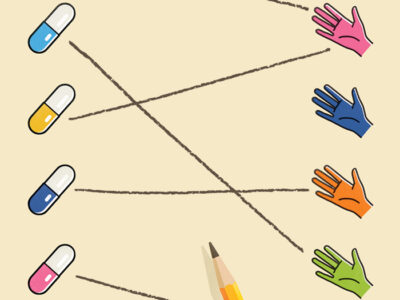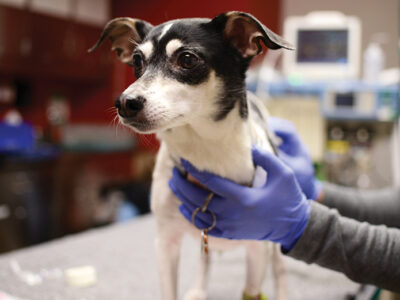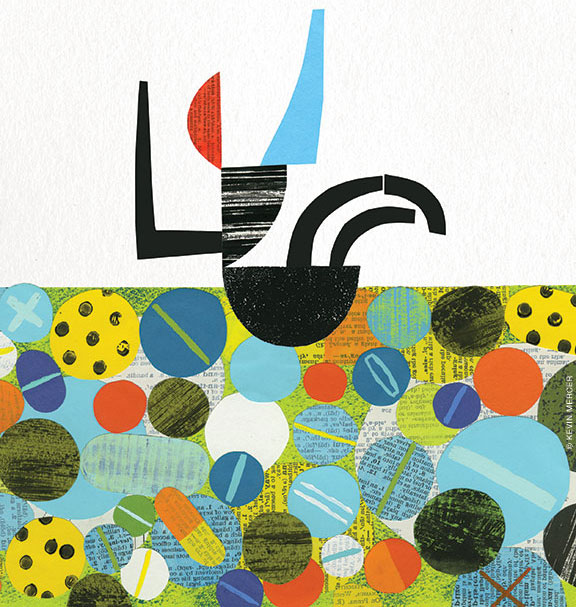
In Risky Medicine, History and Sociology of Science Professor Robert Aronowitz argues that today’s fixation on diagnosing and managing risk factors rather than treating diseases leads to anxiety and stress, over-diagnosis of conditions and overuse of drugs, and radical treatments that are unnecessary or harmful.
By KEVIN HARTNETT | Illustration by Kevin Mercer
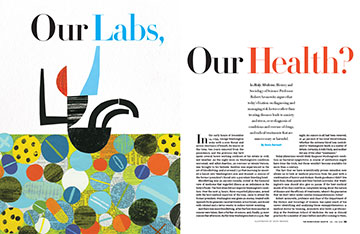
In the early hours of December 14, 1799, George Washington woke with a sore throat and severe shortness of breath. He was 67 at the time, two years removed from the presidency, and the previous day he’d spent several hours working outdoors at his estate in cold, wet weather. As the night wore on Washington’s condition worsened, and Albin Rawlins, an overseer at Mount Vernon, was brought to his bedside. Rawlins was experienced in the art of bloodletting, and at around 7:30 that morning he inserted a lancet into Washington’s arm and drained 12 ounces of the former president’s blood into a porcelain bleeding bowl.
Bloodletting was an ancient remedy, rooted in the humoral view of medicine that regarded illness as an imbalance in the body’s fluids. The first draw did not improve Washington’s condition. Over the next 15 hours, three respected physicians, armed with the best medical expertise of the time, came to attend the former president. Washington was given an enema, treated with Spanish fly (to generate curative blisters in his throat), and dosed with calomel and a tartar emetic to induce violent vomiting.
And there was more bloodletting. After the first draw another 18 ounces were taken, then a further 18 ounces, and, finally, 32 more ounces that afternoon. By the time Washington died at 10 p.m. that night, 80 ounces in all had been removed, or 40 percent of his total blood-volume. Whether the extreme blood loss contributed to Washington’s death is a matter of debate. Certainly, it didn’t help. And neither did any of the other “treatments.”
Today physicians would likely diagnose Washington’s condition as bacterial epiglottitis. A course of antibiotics might have done the trick, but those wouldn’t become available for more than a century.
The fact that we have scientifically proven remedies now allows us to look at medical practices from the past with a combination of horror and disdain: thank goodness I didn’t live back then; those quacks and their foolish nostrums. But Washington’s case should also give us pause. If the best medical minds of his day could be so completely wrong about the nature of disease and the efficacy of treatments, where’s the guarantee that we don’t labor under similar misapprehensions today?
Robert Aronowitz, professor and chair of the Department of the History and Sociology of Science, has spent much of his career identifying and analyzing those misapprehensions. A medical doctor by training, Aronowitz also holds a professorship at the Perelman School of Medicine. He was in clinical practice for a number of years before and after coming to Penn, where he started what is now the Health and Societies Major Program in 1999.
As a physician and a historian, Aronowitz tries to offer a perspective that goes beyond specific debates about whether this or that particular practice improves health. Instead, he’s after a broader critique. In Washington’s time, medicine held the mistaken view that fluid imbalances make people sick. Aronowitz tries to put his finger on the big, paradigmatic errors in the medicine of our own time.
In his latest book, Risky Medicine: Our Quest to Cure Fear and Uncertainty (University of Chicago Press, 2015; excerpt below), Aronowitz argues that our biggest current problem is a fixation on diagnosing and managing risk-factors for disease—things like high blood pressure and high cholesterol, which can contribute to heart attacks, or elevated PSA levels, which point toward prostate cancer—rather than diseases themselves. The consequences that risk-factor medicine induces—the latter-day equivalent of all that blood futilely extracted from Washington—are excessive biopsies and surgeries, a blizzard of prophylactic pharmaceuticals, and a healthcare environment in which anxious patients fret over every little growth or blip in test results.
“You want to improve health through medical means. That’s a good thing,” Aronowitz says. “But it’s also a tragedy if you create risk states that carry their own psychological and medical bad consequences.”
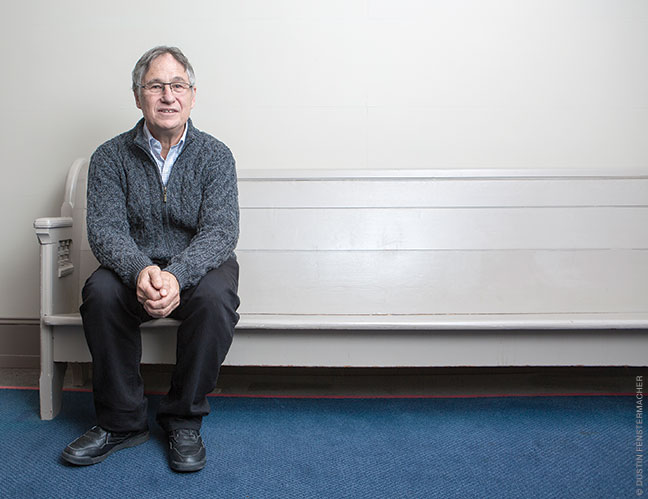
Risk-factor medicine has become so pervasive that it’s hard to even recognize it as a distinct phenomenon unless you go back to a time before it took hold. And that means back to 1948.
That was the year the National Heart, Lung, and Blood Institute began the Framingham Heart Study. The study’s objective was to identify the factors that lead to cardiovascular disease. Its subjects were 5,209 adult residents of the town of Framingham, Massachusetts, whom researchers followed for 20 years. By most measures the study, which continues to this day with its third generation of participants, was a tremendous success. It provided the first evidence for many of the risk factors that today are so well-known they seem intuitive: that smoking, elevated blood pressure, elevated cholesterol, and obesity increase the risk of heart disease, and that exercise and a healthy diet reduce it.
Framingham was innovative in several ways. Aronowitz includes a chapter on the study in Risky Medicine and remarks that the study was notable for its adoption of multivariate regressions—a statistical method, new at the time, that attempted to tease out the relationship between two variables (like smoking and heart disease) while holding constant the effects of other factors that may influence the outcome in question.
But this effort to quantify the riskiness of different behaviors and health indicators contributed to a sense that one’s future health could be thought of as an equation. As Aronowitz writes, “The precise and quantitative relationships among multiple risk factors sometimes gave the appearance that a true predictive science of predisposition to disease had emerged.”
Framingham helped introduce the relationship between health outcomes and risk factors. Its influence also moved responsibility for managing that relationship to patients and their doctors. As new information emerged linking personal behaviors like smoking and measurements like blood pressure with outcomes like heart attacks, individuals became charged with the complicated, uncertain task of heading off disease before it strikes.
“Rather than generating effective population-based programs at a public health level, they were inverted into this sense of, ‘This is my body, these are my lab findings, how can I change them,’” says Allan Brandt, a historian of medicine at Harvard University.
The effort to change those lab findings often involved extensive screening and monitoring, preemptive surgeries, and prophylactic drugs. Overall, medicine shifted from treating active disease with unambiguous symptoms to managing risk factors for diseases that had not—and might not ever—actually occur.
“It used to be that diseases were defined by symptoms patients have, but then [we got] all sorts of diseases that are symptomless, like high blood pressure or high cholesterol,” says David Asch GM’87 WG’89, who holds professorships in the Perelman School of Medicine and at Wharton and is executive director of the Center for Health Care Innovation. “But we feel comfortable calling them diseases, treating them, and what we’re actually trying to do is reduce the risk that they’ll cause things we care about, like heart attacks.”
The shift from treating disease to treating risk factors is especially evident with cancer. In 2007 Aronowitz published Unnatural History: Breast Cancer and American Society, in which, he says, “I tried to understand how [breast cancer], suffered in silence in an isolated way over the course of two centuries, became a mass disease with incredible individual preoccupation.”
Like heart disease, breast cancer became a disease mediated through risk factors like family histories and amenable to personal monitoring, in the form of self-examinations, which were encouraged beginning in the 1910s, and genetic screens. As a result of this increasing vigilance, breast cancer went from being seen as a rare disease that was almost always fatal to the state we have today, where roughly one in eight women is considered likely to develop breast cancer in her lifetime.
According to Aronowitz, this dramatic increase likely says more about medical practice than it does about breast cancer. “There probably wasn’t much more breast cancer in women’s bodies. It’s the way we’ve detected it, labeled it, developed scientific ideas about it, screened for it, and promoted preventative regimes,” he says. He adds that the extra screening increased reported rates of breast cancer and caused women considerable anxiety, but for decades did little to actually improve health.
“From the beginning of this campaign through 1990, there was probably no change in mortality when you adjust for the aging of the population. The whole campaign was troubling in its efficacy, but it spread like wildfire,” he says.
Risk-factor management is now a part of the treatment of virtually every adverse health condition. There are a number of forces that explain the change. A simple—and incomplete—explanation focuses on pharmaceutical companies. Today about half of the prescription drugs taken by the elderly in the United States are intended to reduce risk rather than treat an active disease. The initial drugs to treat rheumatoid arthritis, for example, were designed to treat the pain and swelling caused by the condition. Then medicines like Enbrel were developed that promised to stabilize the course of the disease—opening the way for people who don’t actually have rheumatoid arthritis to be treated for a disease they might or might not one day develop.
This has big and obvious implications for corporate bottom lines. When a company’s drug is prescribed only to active sufferers of a disease, its market is small. But everyone has risk factors for one disease or another. “The answer [for pharmaceutical companies] is to treat risk, because potentially you have the whole population as your market,” Aronowitz says.
A broader and more powerful explanation for the rise of risk-factor medicine is the march of science itself. During the 20th century, medical researchers developed increasingly fine-grained techniques for defining disease pathways and linking seemingly unrelated conditions to the onset of illness. All this knowledge was put to use, even if it was incomplete.
“There is a deeply ironic aspect of Robby’s argument, which is that the more knowledge we produce, in some instances we simultaneously produce anxiety and risk of inappropriate treatment,” says Brandt.
The result, Aronowitz explains, is that it’s increasingly difficult to distinguish between the way doctors treat an actual presenting disease and the way they treat risk factors for that disease. He gives the example of two women, one with breast cancer, the other with a combination of heightened risk factors for the disease. The two patients are in very different health states, yet both might be encouraged to have mastectomies and both might be prescribed the drug Tamoxifen.
“At some level the experience of these two women can be similar, almost indistinct. I call this the convergence of risk and the experience of disease,” he says.
This convergence would not be cause for examination or concern if risk-factor interventions invariably helped, or at least did no harm. But that isn’t the case, and in his work Aronowitz tries to draw attention to the downsides of such large-scale efforts to head off disease.
One is anxiety. “Our constant attention to risk factors can make us constantly feel like we have a time-bomb that should be attended to,” says Asch. (There is mounting evidence that stress itself can compromise physical health.) Another is that the more medicine is focused on risk-factor treatments, the less it’s focused on other ways to improve health.
“Paradoxically, I think medicine has gotten so involved in the treatment of risk that, even though it’s not a limited pie, it does take away from our concern with disability and treating active, symptomatic disease,” Aronowitz says.
And then there are the direct repercussions of overtreatment. Aronowitz points out that emergency room visits for “unexpected adverse drug events” have doubled in the last 10 years. He also says that while we quickly recognize the needless harm inflicted in the past with practices like bloodletting, we’re less quick to notice similarly unnecessary consequences in our own time.
“Why is it any different than today where literally a million men are biopsied in America [to test for prostate cancer] and we still don’t know whether it’s helping or harming them,” he asks.
Aronowitz is a self-styled skeptic, though he didn’t start out that way. He was born in Brooklyn in 1953 and excelled in math and physics as a New York City high school student. But in his late teen years he started to doubt the benefits of increasing scientific knowledge.
“I used to work at my uncle’s engineering firm in the summers of high school, and the 1960s were happening,” he says. “In a thoughtless way I equated science and technology with the war in Vietnam.”
Aronowitz went to college at the University of Michigan, where he was an English major, and afterward to Israel to live on a kibbutz, attracted to the idea of a “voluntary utopian socialist community,” he says. During and after his time in Israel, he considered careers in teaching and linguistics, even earning a master’s degree at Columbia University’s Teachers College, before rejecting both. Neither field, he realized, offered the combination of intellectual stimulation and practical impact on people’s lives that he was looking for.
“There’s one part of me that likes to count the number of angels on the head of a pin,” Aronowitz says. “That’s the stuff of the mind, abstract issues. Then there’s another strong part of me that is service-oriented. At the end of the day, when my head hits the pillow, I’d like to think I made a difference for a particular person.”
His future wife recommended medicine as a field that might fulfill both impulses. He enrolled at Yale Medical School and then came to Philadelphia to do his residency at Pennsylvania Hospital. Afterward, he took a job across the Delaware River, at Cooper University Hospital in Camden, New Jersey.
Aronowitz’s clinical experiences at Cooper gave rise to many of the questions he’d later examine as a historian. He recalls working as a physician in the 1990s, when doctors were expected by the standards of good practice to initiate conversations with female patients about hormone replacement therapies. At the time he was skeptical of the pharmaceutical industry’s role in pushing these therapies and thought evidence in favor of the practice was weak. He refrained from suggesting the therapy as a possibility with patients because, he says, “History tells me there’s no such thing as just information.” Later studies exposed flaws in the research supporting the use of hormone replacement therapies, which were found to be dangerous.
“Almost everything I ever wrote came out of something I observed in the clinic that pissed me off and made me angry,” Aronowitz says.
He began to find an outlet for these observations as a Robert Wood Johnson Clinical Scholar at Penn in the late 1990s, studying under historian of medicine Charles Rosenberg, now a professor at Harvard. Through this experience, “I got a flash that history and history of science and medicine was something I could possibly do,” Aronowitz says. “I took a few classes and got mentorship from Charles [Rosenberg] and Rosemary Stephens [former dean of the College and Professor Emerita of History and Sociology of Science] and I self-educated myself to the history of science and medicine, especially the history of disease.”
In 1999, Aronowitz got the opportunity to deepen his work on the history of disease when Penn asked him to serve as the first director of a newly created program that would bring together interdisciplinary work on the social and humanistic study of medicine. The chance to lead this initiative, now the Health and Societies Major Program in the School of Arts and Sciences, allowed him to combine his academic and clinical interests perfectly, he says. “At the time I moved from Camden to Penn, a kind of lifelong dream got realized, where all of a sudden I was being paid to do both history and medicine.”
Aronowitz began teaching classes and advising students in SAS while also continuing to see patients half-a-day a week. This arrangement lasted until 2005, when he realized “clinical medicine was something I should put-up or shut-up” about, he says. He opted for shut-up and turned his full attention to the history of medicine.
That history is interesting on purely intellectual grounds, but training in it is also generally considered part of what it means to be a good doctor. “The typical answer is, ‘We train humanistic physicians and healthcare professionals by giving broad context for what happens and making them reflective about their work and processes,’” Aronowitz says.
In his mind, though, history and the social sciences do much more than simply provide context for medical care. As he sees these disciplines, they’re as essential to making good medical decisions as the latest journal articles.
“I have a much more ambitious and hardnosed sense that the social context of medicine, economics, anthropology, sociology, history, are kind of basic sciences of clinical medicine. They’re not just humanistic ‘fluff’ to round people out.”
He emphasizes the point by appealing again to cancer medicine. There, he says, it’s difficult for patients and their doctors to really decide between different treatment options without understanding the historical forces that defined those options.
“We’ve had a 100-year war against cancer that’s created fears, and we’ve sold people on the efficacy of radical treatments,” Aronowitz says. “If you don’t understand what’s contributed to those fears, the simple clinical data isn’t going to help you enough [to make decisions]. History is an actual part of the answer.”
The application of historical context to contemporary life is often a form of critique—a way of showing that we’re less unique than presumed or that we’re making errors, which will become obvious with hindsight.
Though he’s aware that his new book could be taken as a blunt knock on the medical profession, Aronowitz insists that’s not how he means it. “I’m a physician. I believe in the benefits of a lot of modern medicine,” he says. “I wanted to call attention to using history to explain how we got to some really strange places.”
He adds that when doctors are willing to criticize their own profession, it makes them more credible when it comes time to provide treatment recommendations to a patient. “I think medicine’s overreaching is like the emperor has no clothes. It undermines trust,” he says.
Aronowitz strikes this same tone in the classroom, going out of his way to be sure his students understand where his criticism of the profession is coming from. “He wants to make clear he’s not anti-medicine, he wants us to think more deeply about medicine because he believes in the good it can do,” says Luke Messac, a dual degree MD/PhD student at Penn who has Aronowitz as his dissertation advisor. “Why he’s so skeptical, why his voice can be critical, is because he wants medicine to live up to its promise—and not make false promises.”
Aronowitz is also quick to say that he does not intend his critique of risk-factor medicine as a criticism of the medical choices any individual might make in consultation with his or her doctor. Similarly, it’s natural to read his work and want to know what it means for a specific medical decision a person might face, like whether to continue going for prostate screens or stick with risk-reducing prescription drugs.
Aronowitz says he feels “discomfort” over the possibility that people will take what he writes the wrong way when thinking about their own medical care. He tells the story of a friend who came to him asking whether she should get a recommended colonoscopy. He says his friend was surprised when he told her to have the procedure done. “She looked at me puzzled and said, ‘Aren’t you anti-screening?’” He explained that he’s not anti-screening as such, but instead tries to be a “thoughtful consumer” of medical practices.
As Aronowitz sees it, that means taking a conservative approach to new treatments. He keeps in mind that medicine is part of the consumer economy, which makes it vulnerable to fads and hype, just like any other market.
“There’s a clinical principle that says [to] learn a few old drugs—learn everything about them and use them as much as you can—and be a slow adopter and have an attitude of questioning and skepticism toward new claims, and allow some time to happen before you jump on the bandwagon,” he says. “That’s something that comes out of the historical case studies I do and is sometimes clinical common sense.”
Aronowitz cites robotic prostate surgery as one recent medical development he wouldn’t be quick to apply to his own body. At the same time, he observes, it’s difficult to label most medical practices as either strictly good or bad. Risk factors, and interventions to reduce them, are assessed at the population level. This makes it hard to apply general knowledge that a certain drug is overprescribed to the case of a specific patient trying to make a decision about whether or not to begin taking it.
Aronowitz doesn’t expect his work will help answer specific clinical questions like that one. He does hope, though, that it will at least explain why we so often find ourselves in medical situations where it’s hard to know what to do. At the same time, he writes with the historian’s cautionary perspective, so that we might not be caught entirely by surprise when later generations appraise our approach to medical care.
“My fear,” Aronowitz says, “is that 200 years from now, looking at this world of risk reduction medicines, with hindsight to know 80-90 percent of things have been shown not to work, they’re going to say, ‘Why were people living like that?’”
Kevin Hartnett is a journalist in South Carolina.
EXCERPT
No Obvious Exit
Advances in medical knowledge and therapeutics have created a tragic situation in the classical sense that the seeds of bad outcomes are intrinsic, foreordained. They follow from what we want: powerful interventions that relieve pain, cure cancer, etc. But the dilemmas, regrets, and uncertainties that sometimes follow are not just problems for affected individuals. I call special attention to our ignorance of the long-term safety and efficacy of health-risk interventions because they are often mass interventions whose effects may take decades to reliably measure. Yet the appeal of prevention and the logic of reducing risk have often led to their rapid and widespread diffusion.
Patients and their clinicians typically enter the risk system together, mostly with their eyes open, often with similar motivations, hopes, and fears. There is no medical conspiracy, nor are even the most controversial ideas and actions simply reducible to a false consciousness, conflict of interest, or other nefarious influences. I avail myself of some risk interventions (two screening colonoscopies), and bury my head in the sand for others. I continuously remind my primary care doctor to not check the PSA box when my blood is drawn for other reasons, but even this might change as I age and review new evidence or simply tire of resisting. Some individuals are helped by medical risk interventions, some hurt, while most are unaffected. But evaluating the risk system, the logic in aggregate inputs and impacts of these linked ideas and practices, is not solely an individual matter, and presents different challenges and responses from a societal perspective.
I would not second-guess the decision of someone with breast cancer who opts for surgery to remove the unaffected breast, even as I am very concerned about the rapid increase in contralateral prophylactic mastectomies across all stages of disease in recent years. At the societal level, we need to critically examine whether screening programs and other practices constitute a self-reinforcing system, driving fear of cancer as well as an overestimation of the efficacy of interventions. While understanding the societal level dynamics can be helpful to an individual contemplating a difficult decision, that person is often too far out on a limb to think about retracing his or her steps. In addition, individuals necessarily weigh odds of help and harm from a very different perspective than a policymaker deciding what is best for a population.
The massive explosion of knowledge of gene-disease correlations and biomarkers and the market rewards of mass interventions, among other influences, make the challenge of risk interventions a pressing concern. There is no obvious exit from this system, and few of us would want to retreat from the considerable benefits and promise of much of modern medicine. But piecemeal attention and response have not been sufficient, and understanding the larger social context of particular practices can suggest other ways to maneuver within the risk system.
Reprinted with permission from Risky Medicine: Our Quest to Cure Fear and Uncertainty by Robert Aronowitz, published by the University of Chicago Press. © 2015 by the University of Chicago. All rights reserved.


